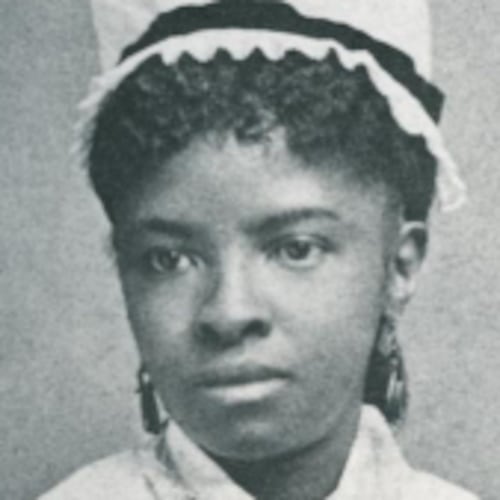This story was originally published in 2022. For our complete Black History Month coverage, click here.
People with sickle cell disease call themselves warriors.
They battle their own bodies, and they too often must confront hospital workers who doubt their pain and a public that doesn’t understand their illness.
The fight begins at a very young age, which is something Alexis Lott knows well.
The 32-year-old marketing consultant was diagnosed with sickle cell when she was six weeks old.
She was in the ninth grade when the condition nearly caused her gall bladder to erupt.
”All of my bodily organs were infected from having a very high bilirubin level, or jaundice. I was literally glowing yellow, and my urine was the color of coffee,” said Lott, who splits her time between Columbus and Atlanta.
Sickle cell is a genetic disorder that disproportionately affects Black people and can lead to stroke, organ damage, pregnancy complications and a shortened life span. Understanding and treating the disease ― which Ebony Magazine once called the “Negro Disease” ― is important to an African American community still grappling with its impact.
It gets its name from the way some of a victim’s red blood cells are shaped like crescent moons, or sickles, instead of being round. The rigid, sticky sickle cells become stuck in small blood vessels, slowing or blocking blood flow and oxygen, and causing pain in the chest, joints and bones.
Unlike healthy red blood cells, which a body replaces every 120 days, sickle cells usually die in 10 or 20 days, leaving the body anemic and sometimes necessitating a blood transfusion.
Credit: Photo courtesy of Alexis Lott
Credit: Photo courtesy of Alexis Lott
Its disproportionate effect
Sickle cell evolved from gene mutations in Black people centuries ago as a natural immunity against malaria. That’s why the trait is most common among those whose ancestors come from sub-Saharan Africa and Spanish-speaking regions in the Western Hemisphere.
The disease occurs in about 1 in every 365 Black births. Sickle cell is also found in about 1 in every 16,300 Hispanic-American births.
People who inherit one sickle cell gene and one normal gene have the sickle cell trait, which means they have no symptoms but can pass on the disease.
About one in 13 Black infants are born with the trait, according to the Centers for Disease Control and Prevention. If both parents carry the trait, their children have a quarter chance of developing sickle cell and 50-50 chance of being born with the trait.
Credit: Dwight Ross Jr.
Credit: Dwight Ross Jr.
One form of treatment is blood transfusions — Lott has had more than 30 — but that poses its own problems.
In large part because of the COVID pandemic, the American Red Cross is facing its worst blood crisis in more than a decade, forcing doctors to make tough decisions about treatment. Lott said Grady Memorial Hospital, which offers the only sickle cell clinic in the area, is overburdened.
“So if I got sick right now, I don’t know where I would go to get relief from the pain,” Lott said.
She has been working with the American Red Cross to try to get more diverse donors, because people of color represent fewer than 2% of blood donations.
The smallest warriors
Shae Guillory knew she carried the trait, because she has a milder form of the disease, called sickle cell beta-thalassemia. She didn’t know her husband Shawn also had a trait, however. The couple had twins Saxton and Sawyer six years ago. Because she carried the trait, she asked for immediate tests. Sawyer had the disease. He had taken an S gene from his mom and and an S gene from his dad. Saxton did not.
The couple had already lost a set of twins during a previous pregnancy, and they were determined to save Sawyer.
“I already had to say bye to two children I so desperately wanted,” she said. “So I sat down every night and I started doing my research to find out what I could do to save my child’s life.” she said.
Credit: Jenni Girtman
Credit: Jenni Girtman
She found Be The Match, the most diverse bone marrow program in the world. A bone marrow transplant infuses healthy blood-forming stem cells into the body to replace damaged or diseased bone marrow. But the donor’s marrow has to match certain traits in the recipient, according to Dr. Ann Haight of Children’s Healthcare of Atlanta.
Sawyer was lucky to have Saxton. When the boys were 3, testing determined Saxton was an exact match for his brother. The operation was done that year.
Credit: Photo courtesy of Children's Healthcare of Atlanta
Credit: Photo courtesy of Children's Healthcare of Atlanta
The procedure was successful, said Haight, who performed the transplant.
Thanks to his brother, Sawyer’s future is brighter.
Not only are they okay, but they are also like “yin and yang, they fit so perfectly together,” Shae Guillory said.
“One likes Legos, the other likes reading books; one likes tablets, the other likes guitar and music,” she said. “They kind of play off of each other, so they’re a perfect combination.”
RESOURCES AND SUPPORT
Sickle Cell Foundation of Georgia: sicklecellga.org
Sickle Cell Reproductive Education Directive (SC RED): sicklecellred.org
The Lockhart-Morgan Foundation for Sickle Cell Anemia: www.facebook.com/lockhartmorgan
Sickle Cell Community Consortium: sicklecellconsortium.org
About the Author
The Latest
Featured






